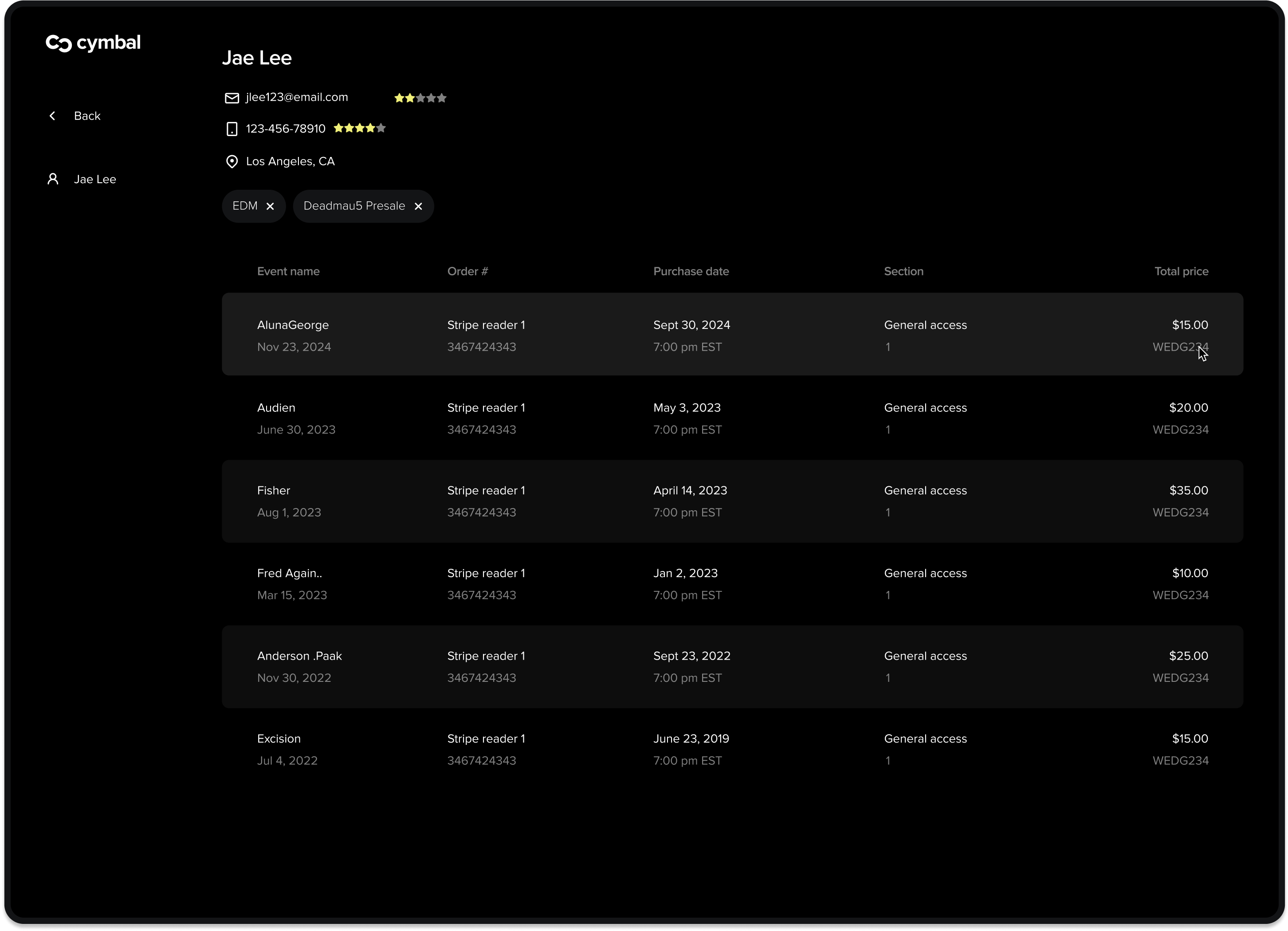Despite the success of new, trendy customer communication channels like social and SMS, email marketing remains one of the most effective channels for reaching and engaging with your fanbase.
The personal touch that comes with a well-crafted email can lead to significantly higher conversion rates than many other forms of marketing. However, to start reaping the benefits and getting concert-goers in the door, you need a strong email list — people who have chosen to hear from you, who want the marketing that you are sending out, and who are actually going to engage with your email campaigns.
In this comprehensive guide, we’ll explore how to build and foster a growing email list filled with patrons eagerly awaiting your event announcements and provide you with information on some of the best email marketing strategies out there.
What is an email list?
Before we discuss the basics of building and growing your email list, it’s important to understand what exactly an email list is and why it’s so important to your email marketing strategy.
Simply put, an email list is a collection of email addresses you can use as a venue owner or event promoter to send event information and promotional messages. Effective email lists are composed of individuals genuinely interested in hearing about your upcoming events, receiving important information about the events they plan to attend, and filling out follow-up surveys.
Ideally, your email list is packed with people who have opted in to receive your communications and are truly interested in your events.
Why should you leverage email lists for event marketing?
If you are a concert venue looking to fill seats and pack rooms, an effective email list can be your greatest asset in event marketing. It lets you communicate directly with potential attendees, informing them about upcoming events and enticing them with exclusive offers, sneak peeks, or early bird ticket deals.
Through compelling storytelling and persuasive calls to action, event emails can build anticipation, drive ticket sales, and nurture relationships with your audience for future events.
How to build an effective email list
When building an email list, focusing solely on numbers is tempting, but this is a common mistake. Rather, it’s essential to focus on quality over quantity. A large but unengaged list serves little purpose, while a smaller, more interested list of patrons can be incredibly valuable.
There are some essential steps to start growing your email list the right way:
Adhering to best practices
The foundation of a strong email list starts with compliance with email marketing regulations, which includes obtaining permissions from contacts before you start sending out emails. This ensures that your communications remain lawful and ethical.
Always provide a clear and conspicuous opt-in method on your website and any other marketing channels where you plan to collect email addresses.
Understanding your audience
Above all, your email list should reflect the interests and demographics of your target audience. Do your homework and conduct market research to understand who your potential subscribers are and what content or promotions would be most valuable to them. Segmentation is a powerful tool for ensuring you send the right message to the right people.
Every campaign isn’t meant for every subscriber. Again, this is a case of quality over quantity when it comes to email list building. By focusing your efforts and segmenting your campaigns, you can reach quality customers and keep them coming back to your shows. In fact, segmented emails drive 30 percent more opens and 50 percent more click-throughs than unsegmented ones.
Creating compelling opt-in offers
Entice potential event attendees and new subscribers with valuable content they can access in exchange for their email addresses. Remember, many people are selective when it comes to what shows up in their inbox and giving away contact information, so they often need a little extra incentivization to sign up.
This incentive could be a presale, discount code, giveaway, or access to an exclusive online event or aftermovies. These incentives, known as “lead magnets,” should be compelling enough to capture your audience's attention and encourage new email signups.
Designing engaging email content
Your email content should reflect your brand and resonate with your subscribers.
Make sure your emails are:
- Visually Appealing: Include graphics and photos of bands or recent shows.
- Mobile-friendly: Write in short paragraphs and keep content concise.
- Attention-grabbing: Leverage your subject lines to improve your open rates.
- Customized: Craft personalized emails with exclusive content to suit your target audience when possible.
- Strategic: Design effective email marketing campaigns to attract potential customers.
Great content keeps your subscribers engaged, and looking forward to your next email.
Tracking engagement
On average, people spend six hours and 42 minutes online every day. Use analytics to reach the right audience, and make sure that the people scrolling through their inboxes are opening your emails and not getting lost down the e-commerce rabbit hole.
Utilize email analytics to track open rates, click-through rates, and other metrics to gauge the effectiveness of your email campaigns. It is important to monitor these metrics to understand what content resonates with your audience and adjust your strategy accordingly.
Optimizing your Email List
Again, it might seem like having a massive email list chock full of potential event attendees is the way to go, but this is actually not the case. Regularly clean your email list to remove inactive or unengaged subscribers.
If you are actively tracking engagement (as you should), you will understand your open rate, who is engaging, and who is ignoring your communications. Optimizing your email list ensures a stellar open rate and guarantees that you are reaching only interested parties.
Integrating email with other marketing channels
Integrate your email list with other channels like social media for a more comprehensive marketing approach. Cross-promotion encourages your social media followers to subscribe to your email list and your email subscribers to follow you on their social media accounts.
Consider running promotional campaigns that provide incentives for email subscribers to like or follow your page and vice versa. This is a great way to maximize your results, and promotion on social media will also help improve your email open rates.
Grow your audience with Cymbal
At Cymbal, we are genuinely invested in seeing you and your events reap the results that you are looking for. In a truly collaborative approach, we can help you grow your email list, attract new customers, and take your marketing to the next level.

The bottom line
A well-maintained email list is a direct line to your dedicated fans and potential event attendees, making it a powerful tool for driving sales and packing venues. By following the best email practices and utilizing the right tools correctly, you can build and grow an email list that supports your business goals.
Your open rates will soar as long as you remember to provide value to your subscribers, respect their privacy, and keep your marketing fresh and effective. Contact us today to get started.
Sources:
How Digital Marketing Evolved Over Time: A Bibliometric Analysis on Scopus Database | Pub Med Central
Digital Marketing: A Review | Research Gate
Dynamically Managing a Profitable Email Marketing Program | American Marketing Association
The Ultimate List of Email Marketing Stats for 2023 | HubSpot
We’re Cymbal. The easiest way to sell more tickets
We’re here to support your journey toward better, more consistent event marketing.
Below you’ll find tips and tricks to refine your marketing strategy and sell more tickets.
Want to learn more about Cymbal? Sign up to our email newsletter.





